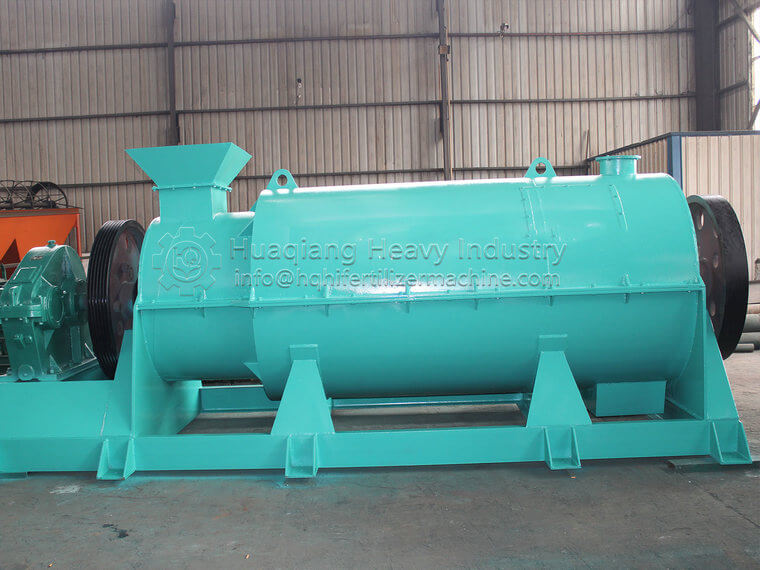The advantages of roller extrusion granulator in the production line of cow manure organic fertilizer
In the production line of powdered organic fertilizer from cow manure, the roller extrusion granulator has significant advantages compared to other granulation methods, which are reflected in the following aspects:
1. Efficient granulation
The roller extrusion granulator can quickly process organic materials such as cow manure into granules through high-pressure extrusion, with high granulation efficiency and fast production speed, suitable for large-scale production.
2. High particle strength
During the extrusion granulation process, the raw materials form particles under high pressure, resulting in a tight internal structure, high strength, and resistance to breakage, which is beneficial for the storage, transportation, and application of fertilizers.
3. Uniform particle size
The roller extrusion granulator can produce uniformly sized particles, thanks to the precise control of the roller gap and raw material feed rate by the equipment, ensuring the consistency and quality stability of the final product.
4. Low energy consumption
Compared to other granulation methods, the energy consumption of the roller extrusion granulator during the granulation process is relatively low because it mainly relies on mechanical extrusion rather than thermal action, reducing energy consumption and lowering production costs.
5. Environmentally friendly
The roller extrusion granulator generates relatively less dust and noise during operation, which helps improve the working environment and reduce environmental pollution.
6. Wide applicability
The roller extrusion granulator is not only suitable for cow manure, but also for processing various organic materials, including chicken manure, pig manure, straw, grass powder, etc., with a wide range of raw material adaptability.
7. Self cleaning function
Some roller extrusion granulators are designed with self-cleaning systems that can automatically clean residual materials on the pressure rollers, reduce downtime for maintenance, and improve production continuity and efficiency.
8. Easy to maintain
The structure of the roller extrusion granulator is relatively simple, and the operation and maintenance are relatively easy. The main maintenance work focuses on regular inspection and replacement of worn rollers, resulting in lower maintenance costs.
9. Customizable
According to the specific needs of the production line, the roller extrusion granulator can be customized, such as adjusting the size, shape, and gap of the pressure roller to meet the requirements of different particle sizes and yields.
In summary, the roller extrusion granulator has become one of the key equipment for achieving industrial production of organic fertilizers in cattle manure powder organic fertilizer production lines due to its efficient granulation capacity, high-quality particles, low energy consumption, and environmental friendliness.

.jpg)
.jpg)
.jpg)



.jpg)
